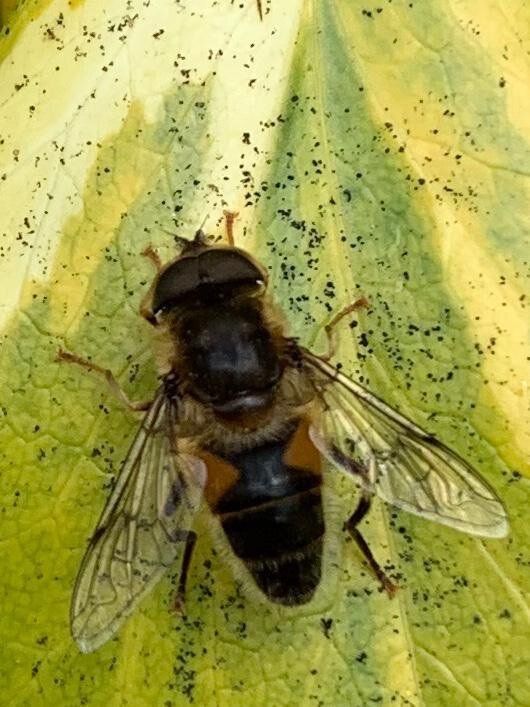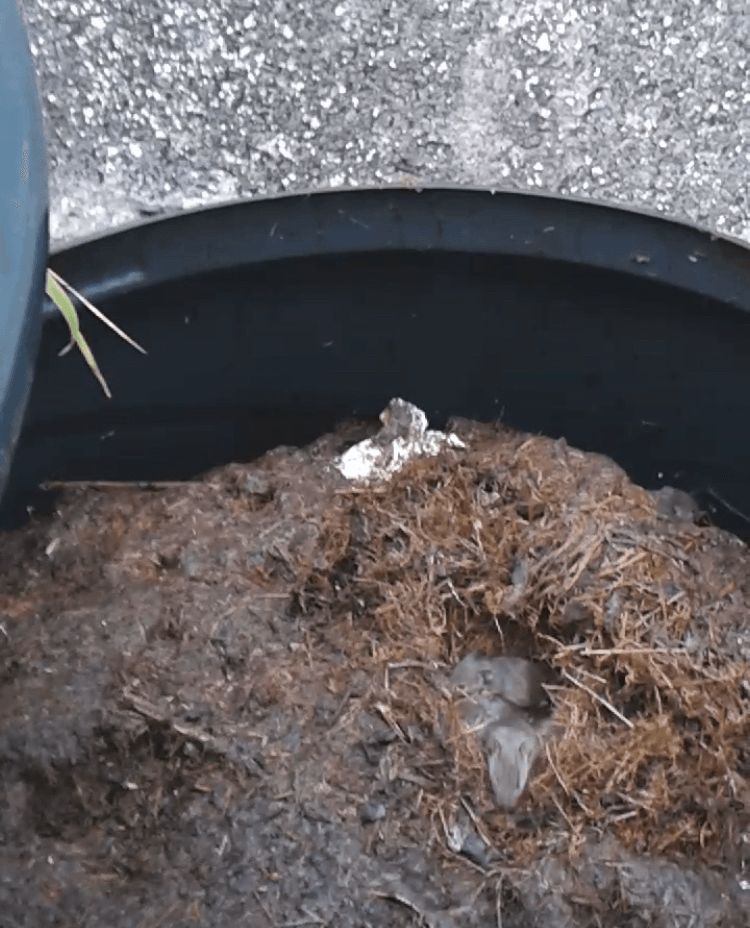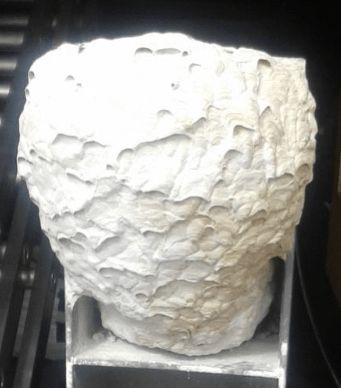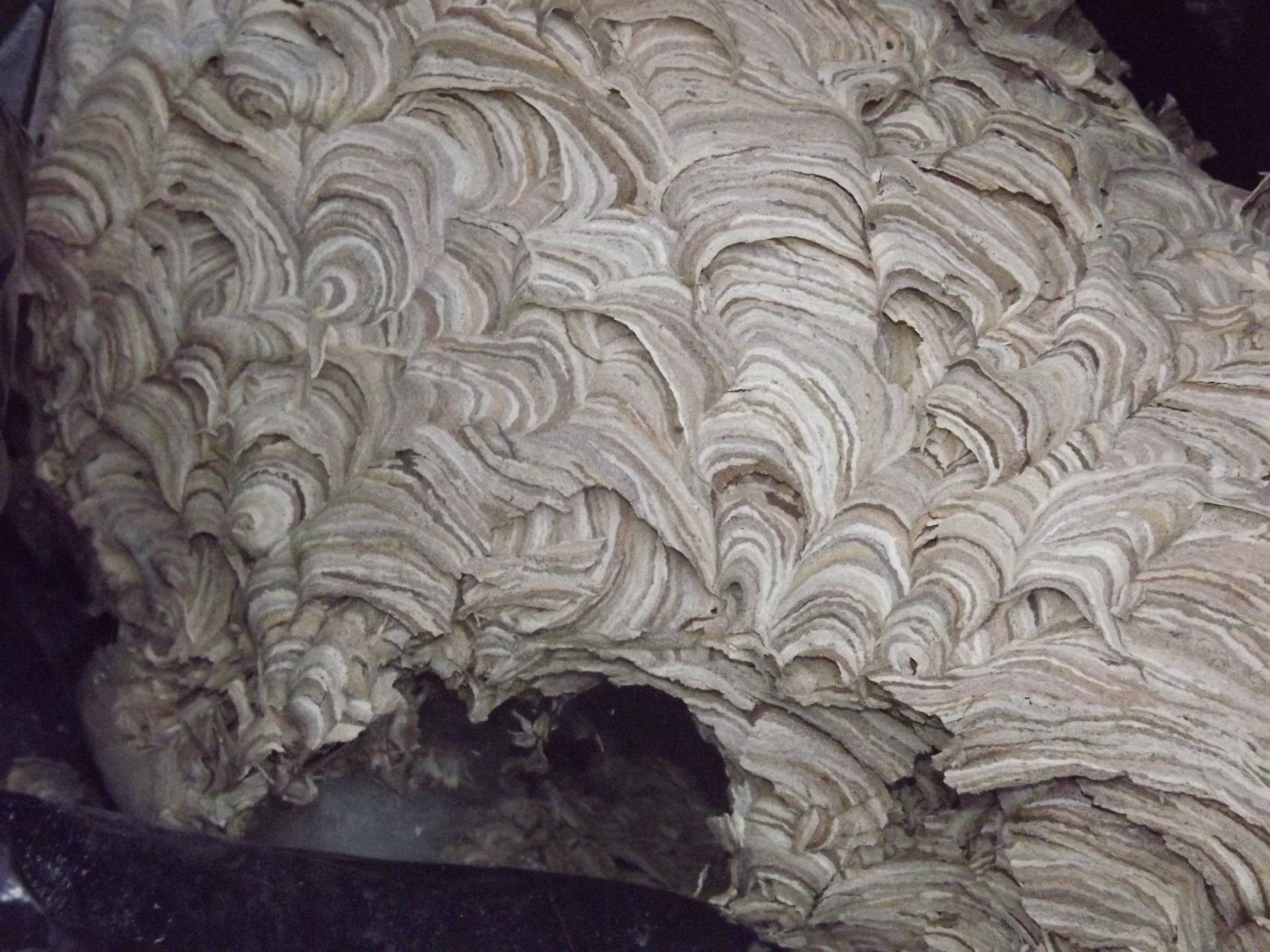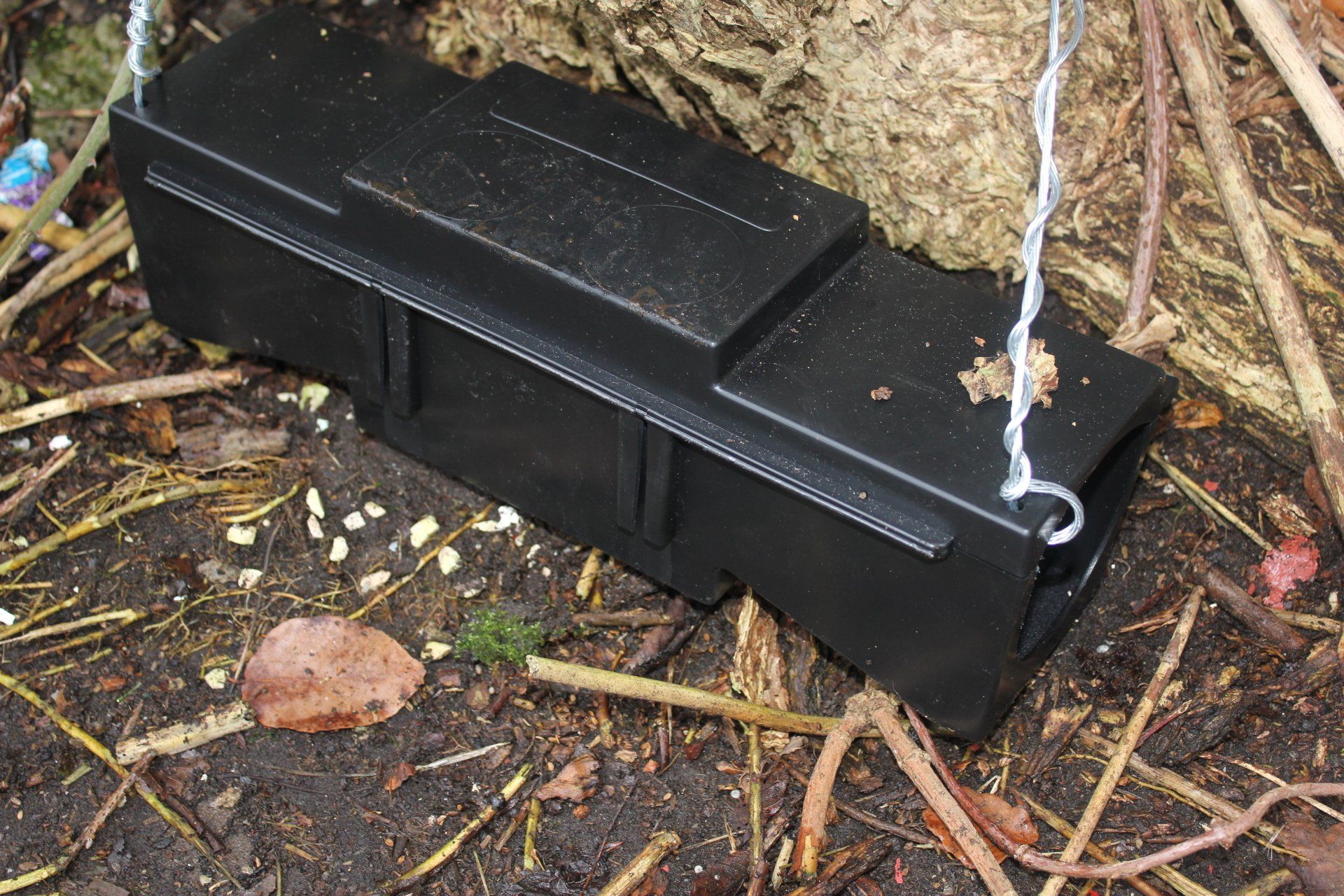- Commercial and Domestic contracts . 12+ years experience in pest management in hospitality, catering, farming, offices, health care, warehouse, storage facilities and government contracts.
FERMANAGH PEST CONTROL
CALL US ON: 02866341127 OR 07514822426
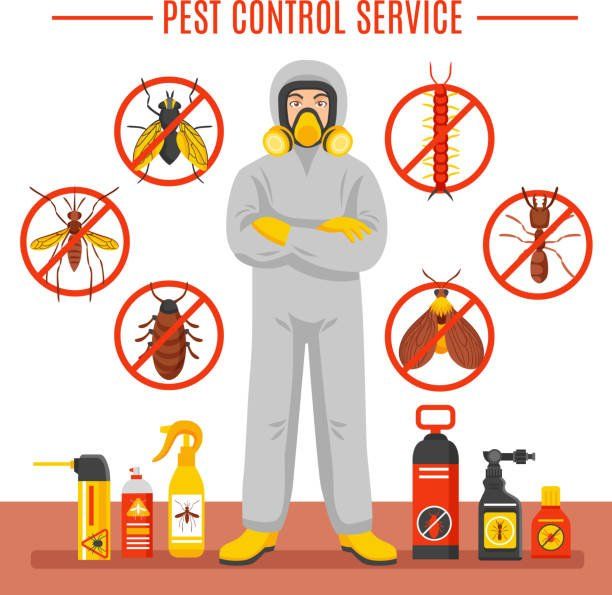
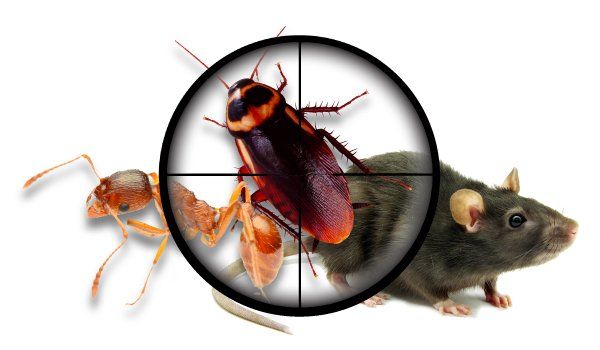
- Professional pest control services carried out by B.P.C.A Certified technicians.
- Certified Field Biologist
- R.S.P.H (Royal Society Public Health )
- N.P.T.A (National Pest Technicians Association) member.
- B.P.C.A (British Pest Control Association) member.
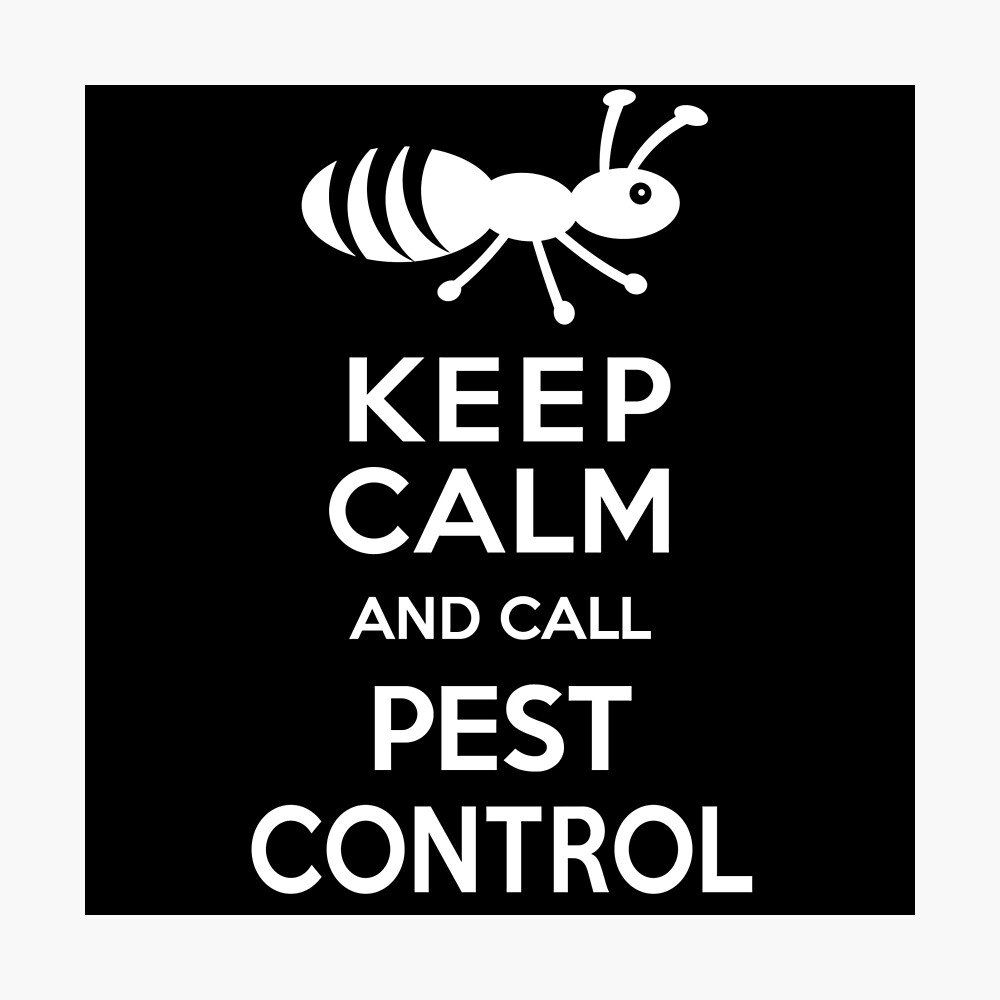
Fermanagh Pest Control Ltd.
15-19 Carrickbeg Road
Enniskillen
BT74 5AF
Tel :02866341127 Mob: 07514822426
Website. www.fermanaghpestcontrol.com
Email. fermanaghpestcontrol@hotmail.co.uk
RODENT CONTROL
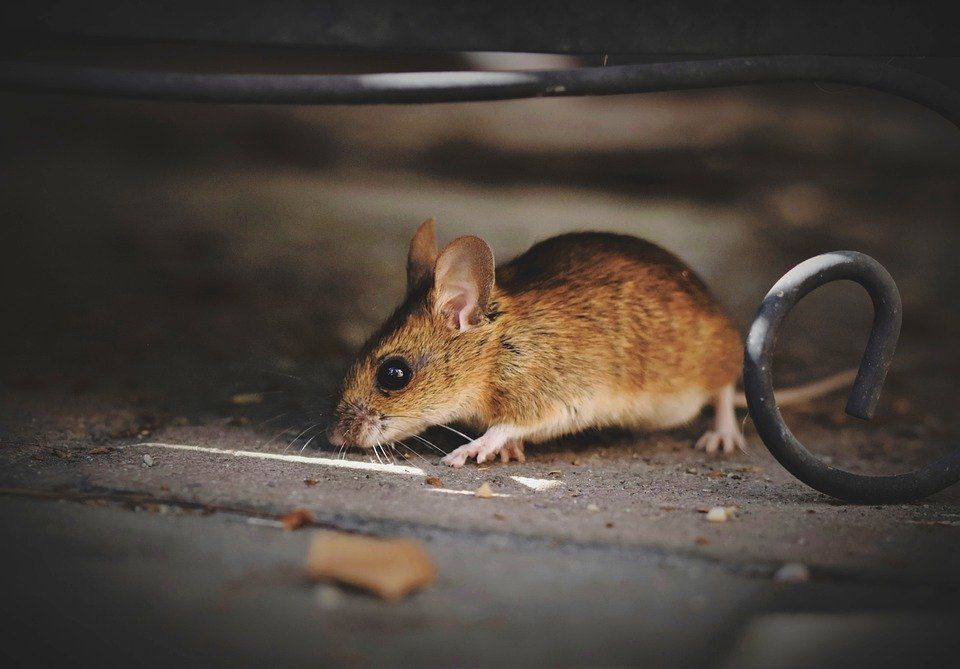
Biology & Habits
The house mouse has a typical mouse profile: small feet with big eyes and thinly-haired ears, and a pointed snout with thin whiskers.
Their body length ranges between 60-90mm, and the tail generally equals the length of its body, adding another 90mm.
They weigh less than 25g, and their fur colour is uniformly light brown and grey, right down to the tail which has sparse hairs on it.
You can easily tell a mouse from a young rat by looking at their feet; the feet of a rat are much larger in comparison with their body than a mouse’s. Adult rats, of course, are bigger than mice.
House mice have a characteristic musky odor that identifies their attendance within the area. Mice are active mostly at night, but they can be seen occasionally during daylight hours
If there are good living surroundings (food, water, and shelter), they can increase rapidly. They sexually mature in two months, producing about 8 litters in a one year life time. Each litter has 4-7 pups.
Mice eat several times at changed areas, they do have two main feeding times this is earlier than sunrise and at sunset, and they would snack at other times of the day at intervals or every 1-2 hours. They can eat about 10 to 15% of their body weight every day, the adults weighing about 5/8-1 oz. Mice also cache food as supply permits. They get much of their water from food products.
House mice are outstanding climbers and can run up any jagged vertical surface. It will run horizontally along wire cables or ropes and can jump up about 12- 13 inches from the ground onto a level surface.
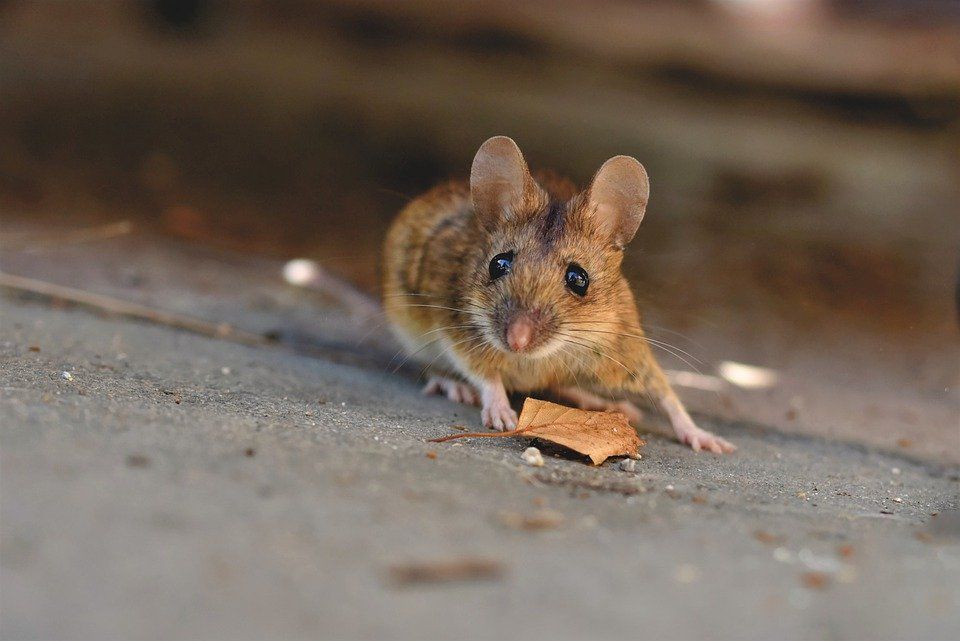
How to recognise a mouse infestation
On average, a mouse will let go of 70-80 droppings every day.
Mice are nocturnal creatures, however, so you might not see them during the day at all, meaning that you might only see the signs that they have been there.
They also leave dark coloured droppings around the place, and are constantly chewing on things so gnawed furniture, cereal boxes, or any number of other things, most importantly cables, are signs that you have a mouse infestation. The chewing of cables and scratching sounds can sometimes be heard at night.
On occasions, in fact, mice make their nest within electrical appliances so it is important to carry out mouse control as soon as you can. Apart from seeing them or noticing their effects, however, the best way of noticing mice at night is to listen carefully for a scurrying sound.
Mice breed very quickly so it is important to get rid of your mouse infestation as soon as you can. To be sure of achieving this properly, it is best to invite a professional to take care of the job.
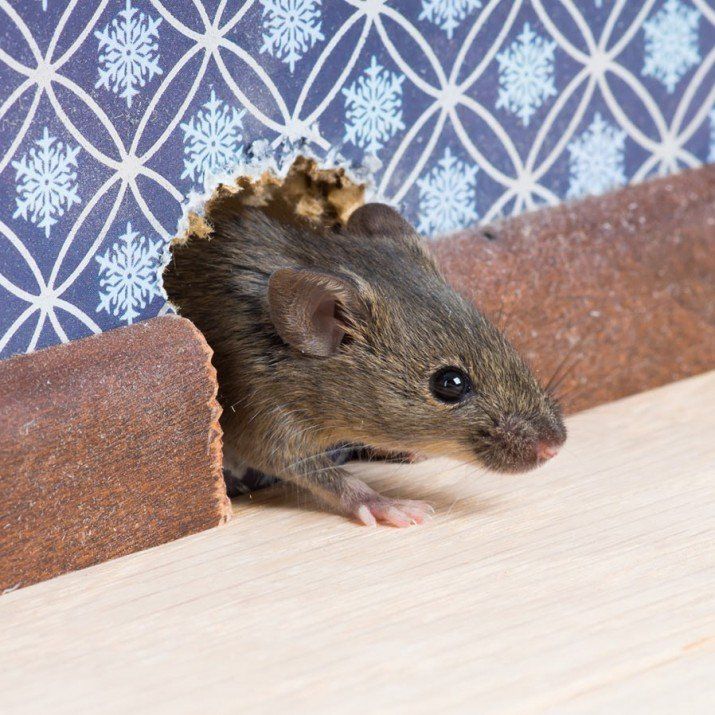
Prevention
It is important to get rid of mice quickly, as mice are adaptable, highly mobile and breed rapidly. This combination can make mouse control a difficult task for the untrained individual.
Mice only need a gap of 5mm to gain entry (roughly the diameter of the eraser end of a pencil).
However, due to their habits, traditional baiting techniques and trapping frequently do not work, and a combination of rodenticides may be necessary.
Amateur-use products are restricted and it is likely that you won't be able to purchase the necessary poison.
Good hygiene practices won’t eliminate a mouse problem, but poor practices will attract them.

Biology
- 0.5kg
- 23cm length (without tail)
- Blunt muzzle
- Sturdy body
- Small, hair - covered ears
- Smalls eyes
- Tail shorter than body
Breeding
A female rat can reproduce every six weeks with litters consisting of 6-8 offspring. Each part of the cycle takes 21 days on average.
When a female rat is impregnated, the gestation period lasts for around 21 days.
Rats are mammals and so they give birth to live young called pups. It then takes 21 days to wean those pups.
Newborns can become sexually mature after only 5 weeks, at which point they can spawn their own broods.
This means that a pair of brown rats could potentially produce as many as 200 babies and 2,000 descendants in just one year, maybe more.
Rats are omnivorous and will eat almost anything that humans eat
Prevention
Rats will chew on anything, they need food to maintain them so if you deny them that nutrition it is an excellent way to getting rid of rats, making sure they continue to stay away from your building and not attracting them in.
Keep good hygiene standards. Make sure that reject food is stored in bins and rubbish bags are not left near the house. Keep all food out of the way or in hard containers. Any mess made by pets should also be cleaned up quickly.
Other options of keeping rats away include having a well-kept garden, removing sources of water from ground level so rats cannot access them and clearing blocked drains immediately.
If you feed garden birds, do not do this to excess and use a bird table or feeder basket if possible.
More specific advice on rat control procedures applicable to your own home can be provided by a professional so give us a call.
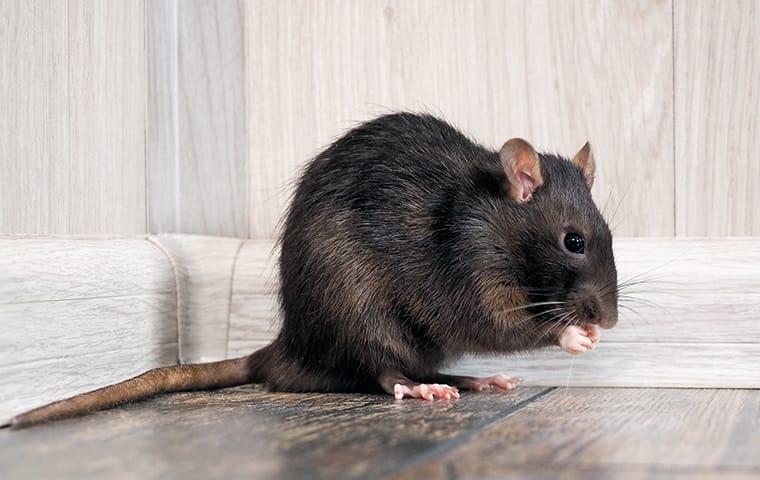
Biology
- 0.25kg
- 15cm length (without tail)
- Pointed muzzle
- Slender body
- Large, almost hairless ears
- Large eyes
- Thin tail, longer than body
Breeding
A female rat can reproduce every six weeks with litters consisting of 6-8 offspring. Each part of the cycle takes 21 days on average.
When a female rat is impregnated, the gestation period lasts for around 21 days.
Rats are mammals and so they give birth to live young called pups. It then takes 21 days to wean those pups.
Newborns can become sexually mature after only 5 weeks, at which point they can spawn their own broods.
This means that a pair of black rats could potentially produce as many as 200 babies and 2,000 descendants in just one year, maybe more.
Black Rats feed mostly at night and an average rat will eat 50g of food a day
Prevention
Black Rats are adaptable, highly mobile and breed rapidly, this combination can make rat control a difficult task for the untrained individual.
Rats will chew on anything, they need food to maintain them so if you deny them that nutrition it is an excellent way to getting rid of rats, making sure they continue to stay away from your building and not attracting them in.
Keep good hygiene standards. Make sure that reject food is stored in bins and rubbish bags are not left near the house. Keep all food out of the way or in hard containers. Any mess made by pets should also be cleaned up quickly.
Other options of keeping rats away include having a well-kept garden, removing sources of water from ground level so rats cannot access them and clearing blocked drains immediately.
If you feed garden birds, do not do this to excess and use a bird table or feeder basket if possible.
More specific advice on rat control procedures applicable to your own home can be provided by a professional so give us a call.
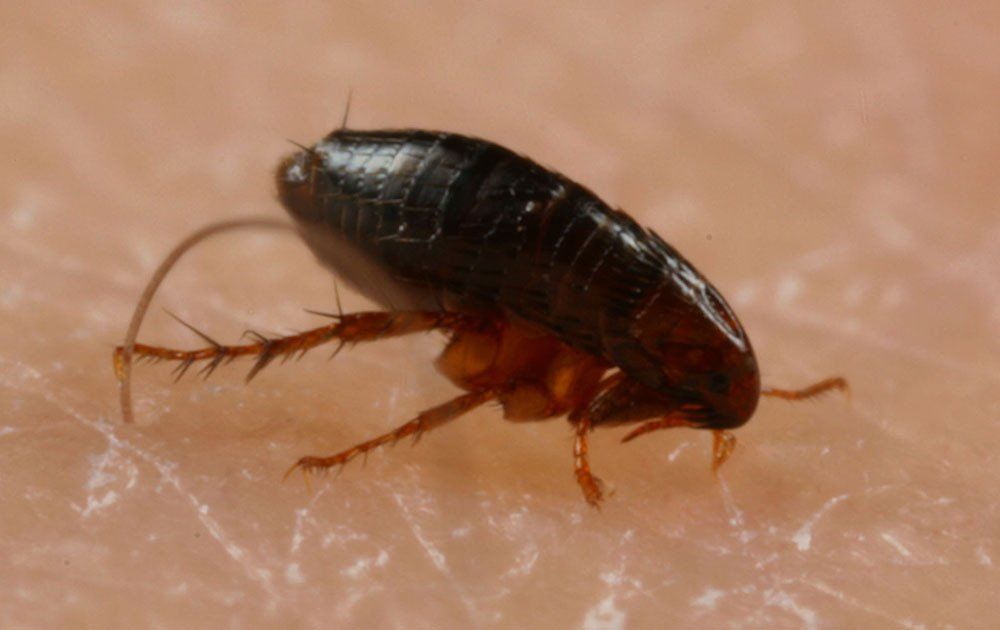
Cat Fleas
Habitat - Parasitic in adults, adapted to living among fur of the host and feeding on its blood. Larvae live on the floor or in bedding of host feeding mainly on faeces (droppings) of adult fleas.
Biology - Egg - larva - pupa - adult.
Eggs - up to 1,000 per female, 1mm, white laid after a blood meal in small batches amogst the fur of the host.
Larvae - legless, whitish up to 5mm long, thrive best in humid places in host bedding or on floor.
Pupae - Normal emergence in 2 - 4 weeks.
Adults - about 2mm long, brown, wingless, laterally flattened and with large hind legs for jumping.
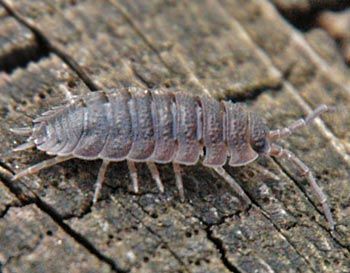
Woodlice
Habitat - They are crustaceans that live on the land and are more closely related to crabs and prawns than to other land-based invertebrates. Woodlice have not entirely escaped their aquatic ancestry. They need a damp environment and will dry out and die in most areas of a centrally-heated home.
Biology - They have oval, grey, segmented bodies 10-15mm long, with 14 legs and prominent antennae. Common names include ‘slaters’, ‘sow-bugs’ and ‘pill-bugs’.
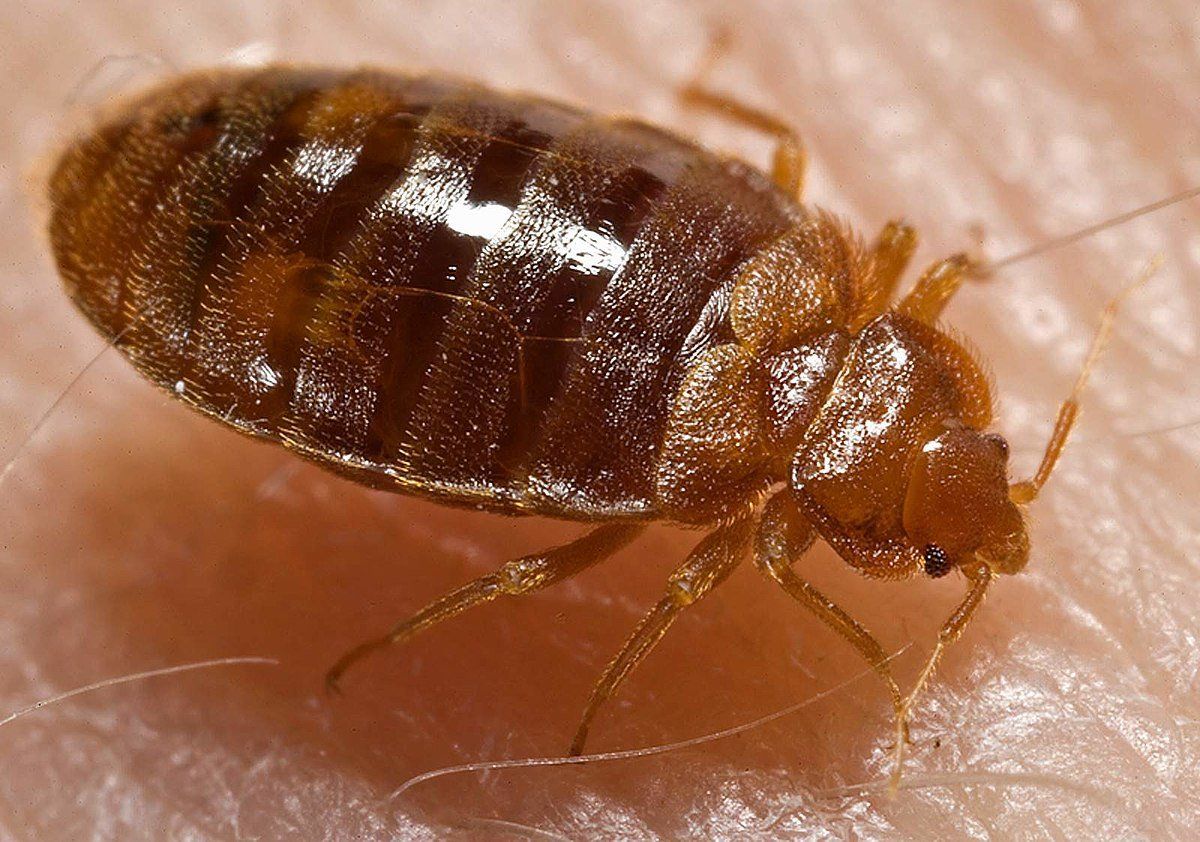
Bed Bug
Habitat - Noctural parasite, all stages feeding on mammalian blood, principally human but also dog, cat, rodents. Hide by day in crevices in beds, furniture, wallpaper, skirting boards and emerge when hungry
Biology - Egg - nymph - adult.
Eggs - up to 200, possibly more, laid at a rate 4 -5 a day glued to crevices and harbourages.
Nymphs - 5 moults, taking from a few weeks to several months depending on food supply and conditions.
Adults - wingless, flattened unless recently fed, about 6mm long.
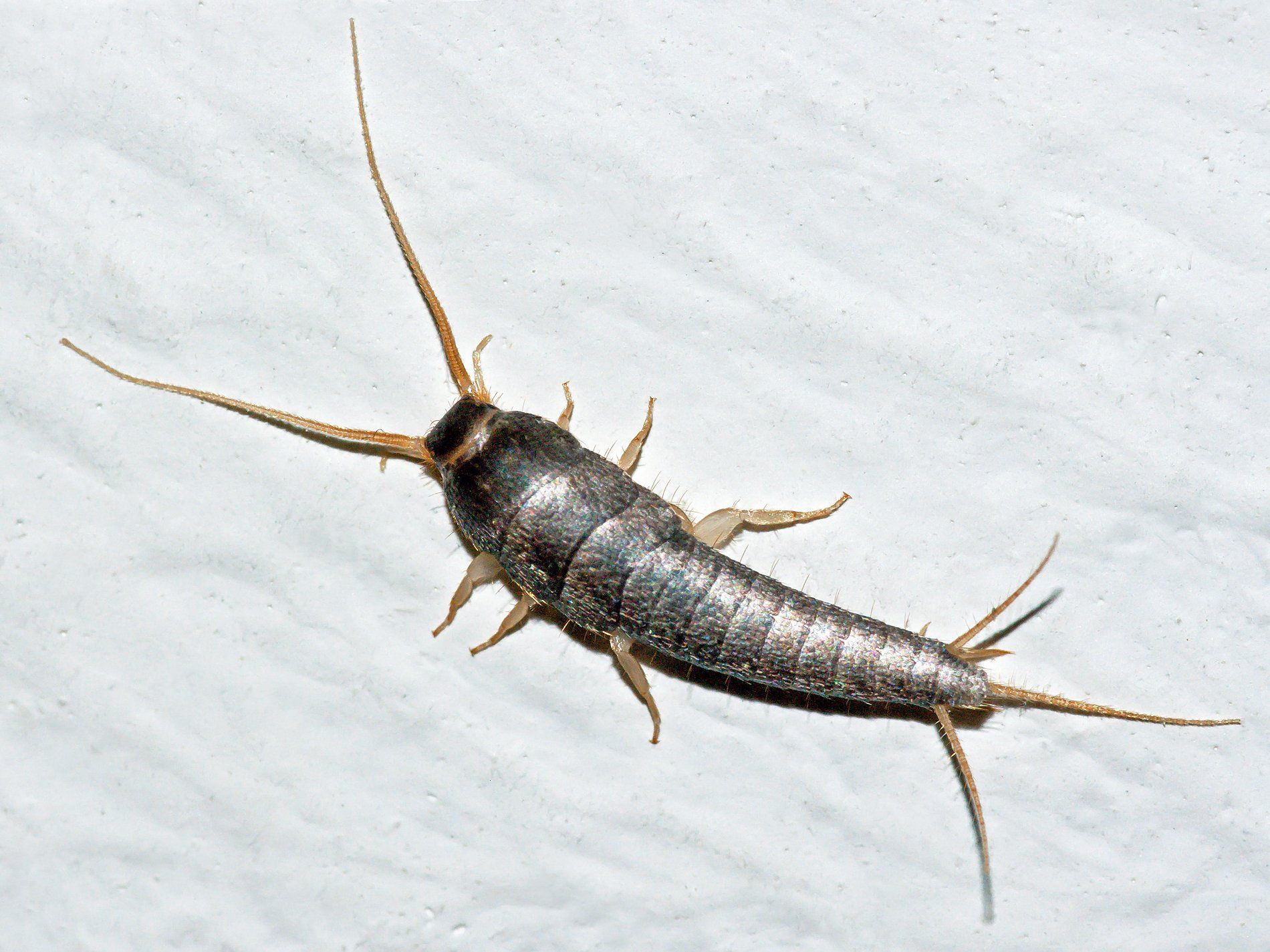
Silverfish
Habitat - Nocturnal, forgaging in bathrooms and kitchens. Hide by day in crevices, behind tiles, wallpaper, skirting boards and bath panels. May become trapped in sinks, baths and glass due to smooth or polished surfaces.
Biology - Egg - nymph - adult.
Eggs - up to 100 laid over 2 month period.
Nymphs - up to 10 moults taking up to a year to develop in adult.
Adults - primitive wingless insects, silver grey up to 20mm

Common Clothes Moth
Habitat - Moderately common pest of animal derived fabrics, furs and feather products. Found worldwide except tropics. Damage by larval stage only.
Biology - Egg - larva - pupa - adult.
Eggs - in suitable larval food, among clothing or carpet fibres. Hatch above 10 ºC in 1 - 5 weeks.
Larvae - whitish caterpillars that form silk tunnels camouflaged with fibres and debris. Devleop in 2 - 7 months.
Pupae - Develop in 2 weeks to 2 months.
Adult - small, straw coloured fringed wings held a long body. Females do not fly, males occasionally. Do not feed, short lived.

Grain Weevil
Habitat - Well established in UK as a pest of whole cereal grain, sometimes hard cereal products. Not other stored foods. Larvae live totally within grains. Survive winter in UK but not breed below 13ºC.
Biology - Egg - larva - pupa - adult.
Eggs - up to 350 per female at rate of 1 -2 per day over 9 month period.
Larvae - legless grubs living tatally within cereal grains, 4 moults develop in 3 weeks to 3 months.
Pupae - within grain. Adults bite hole to emerge, leaving grain as empty husk.
Adult - 3-4mm, dark brown, rounded body and long 'snout'. Incapable of flight. Live 9 months to 1 year.
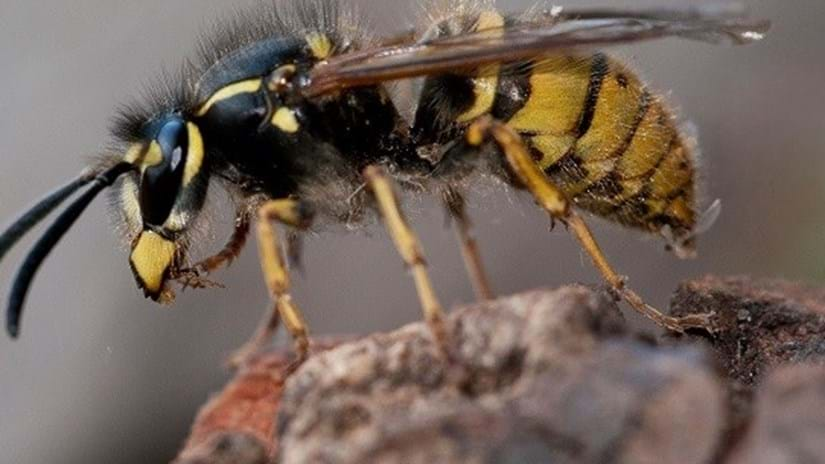
Common Wasp
Habitat - Temperature species forming nests in soil banks, rooof spaces, wall cavities and trees. Nests formed of paper (chewed wood). Colonies only survive one season in the uk.
Biology - Egg - larva - pupa - adult.
Eggs - many 1,000's laid by queen in hexagonal cells throughout spring and summer.
Larvae - legless grubs within cells fed by workers on chewed insects, spiders. Develop in 4 weeks.
Pupae - develop in about 2 weeks within cell.
Adult - workers winged, 10 - 20mm long, distinctive black and yellow colouration. Queen winged, similar colouration but larger.
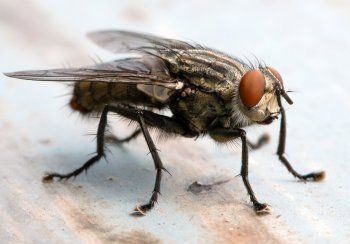
Cluster Fly
Habitat - Adults live harmlessly out of doors in summer buy may enter buildings (usually roof spaces) in autumn to hibernate, sometimes in vast numbers.
Biology - Egg - larva - pupa - adult.
Eggs - laid in damp soil, rotting vegetation. Hatch in about a week.
Larvae - soon after emergence seek out and parasitise earthworms which are eventualy killed. Development several weeks.
Pupae - in soil
Adults - 6mm long, blackish, with fine golden hairs on thorax. Often 2 generations per year.
INSECT CONTROL
Contact Us
We will get back to you as soon as possible.
Please try again later.


